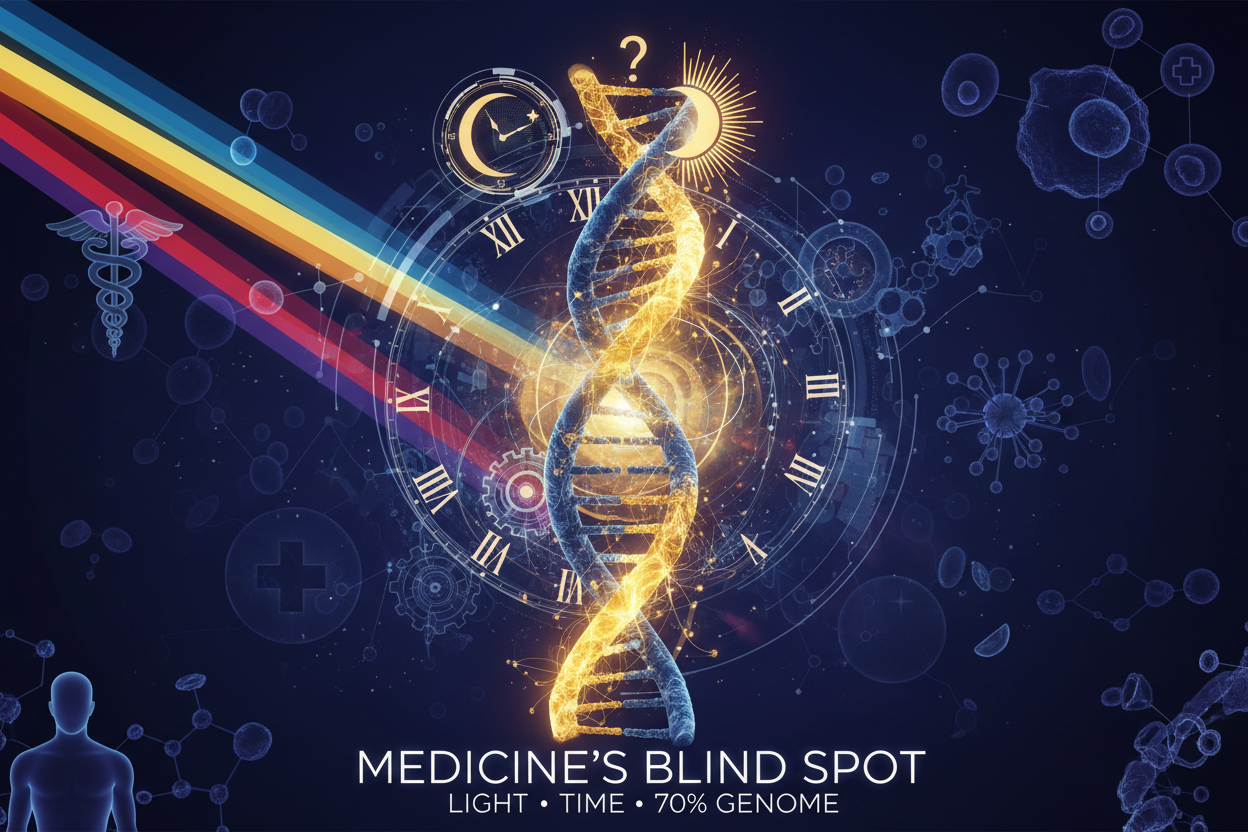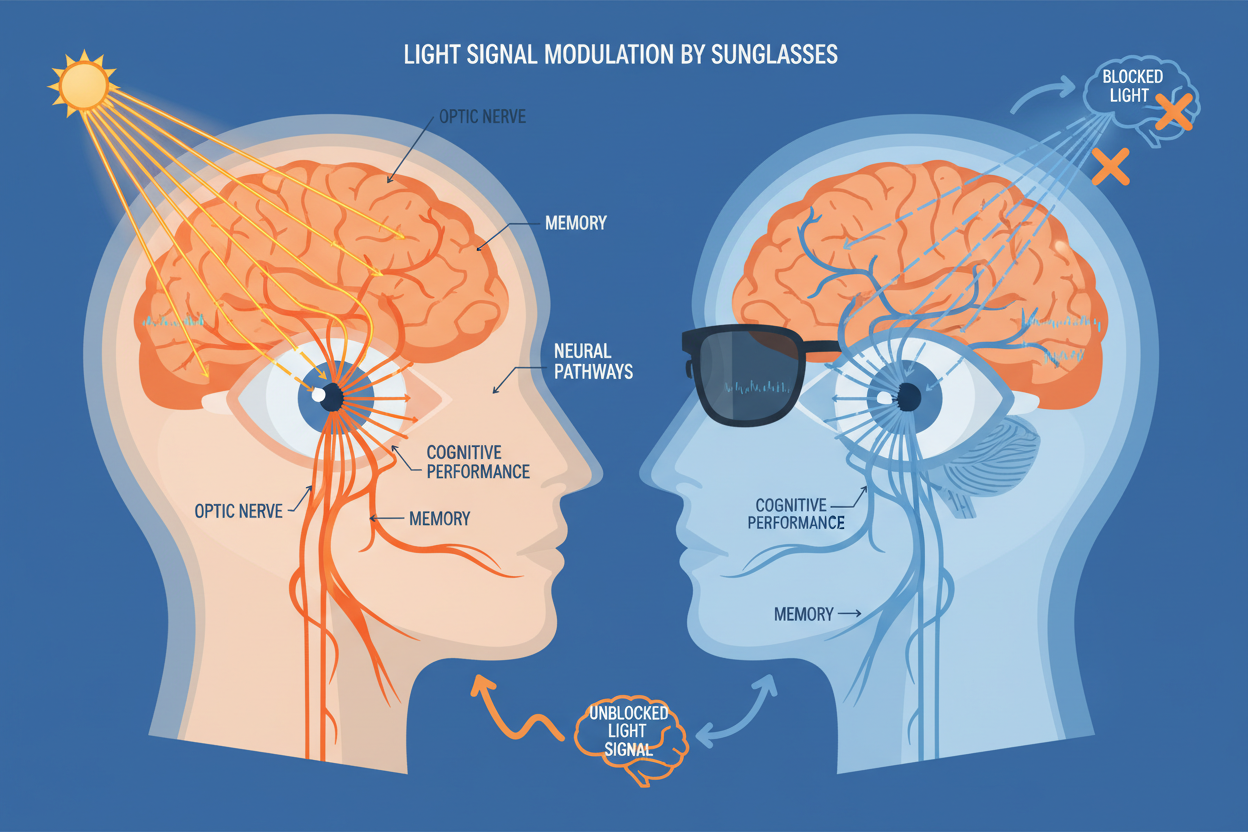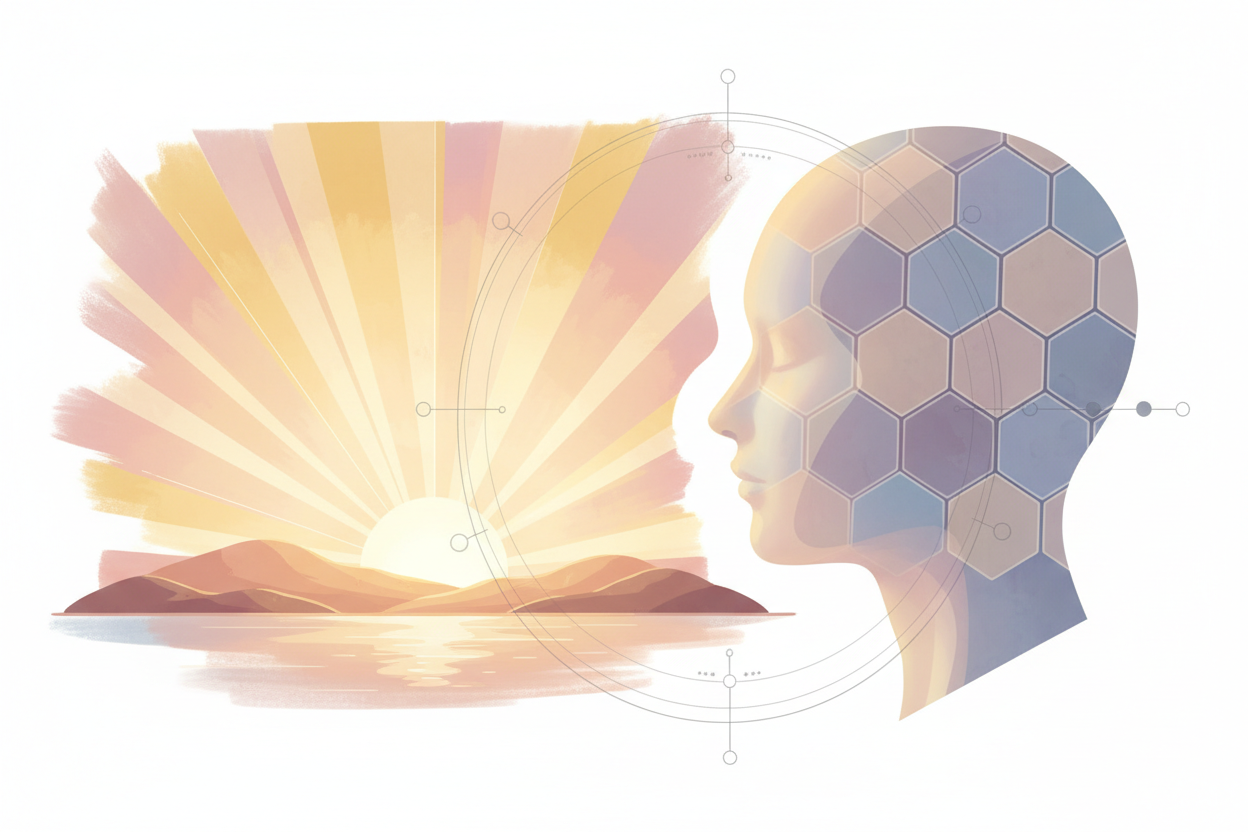
Seeing the sunrise: How light awakens our cells to life
Not every sunrise is just a visual pleasure. It is a fundamental biological act. It is the moment when light triggers the orchestra of cellular metabolism, when our mitochondria – the solar furnaces in every cell – receive the command to produce energy. If this light is missing, the proper flow of electrons in the body does not start, synchronization stops working, and life cycles begin to turn counterclockwise. And this is where disease begins.
Sunlight as a Metabolism Switch
In the morning light, all components of the Krebs cycle (TCA cycle) run like a clockwork. Their goal is to remove hydrogen ions (H+) from metabolic intermediates and supply the mitochondrial matrix with light hydrogen – the fundamental fuel for life. Thus, light directs the flow of metabolism towards health.
However, if light is missing – for example due to living indoors, using LED lighting, glasses with UV filters, or sleeping until noon – the body activates an ancient survival mode. The reverse TCA cycle, known from over 2 billion years ago, turns backward. Instead of producing energy, the body begins to recycle H+ and CO₂ – metabolism slows down, cellular renewal decreases, and the process of chronic aging begins.
Ferredoxins: The Electric Hearts of Cells
Ferredoxins are small iron-sulfur proteins – biological "batteries" that determine the direction of electron flow. They function as key carriers in redox reactions. When exposed to the right light, they trigger anabolic processes – hormone synthesis, tissue regeneration, and mitochondrial renewal. Their redox potential is extremely low (up to -420 mV), which is precisely why they are capable of redirecting metabolic flow from catabolism (breakdown) to regeneration.
Without light? Ferredoxins work differently – the cell begins to metabolize CO₂ and H+ as a last survival option. Internal inflammation increases, mitochondrial capacity decreases, and the body switches to emergency mode.
mTOR, iron, and the logical gate of metabolism
The sun does not only trigger biology – it triggers logic. The mammalian target of rapamycin (mTOR) is not just a regulatory enzyme. It is a photobiological switch that decides whether the cell starts producing energy or begins to break down. And it is precisely sunlight that activates or deactivates mTOR. A lack of light means a loss of this regulation. The cell does not know whether to repair or degrade. Confusion leads to fatigue, inflammation, hormonal dysregulation, and lifestyle diseases.
Iron, contained in ferredoxins, also plays a key role. It is essential for electron transfer but must be carefully regulated. Excess or deficiency of iron disrupts mTOR balance and increases the risk of oxidative stress (ROS).
Deuterium: The Invisible Brake on Cellular Energy
Deuterium, a heavy isotope of hydrogen, is a natural component of water and food. But in excess, it slows down chemical reactions inside cells – C-D, N-D, and O-D bonds are significantly slower than regular bonds with light hydrogen. This slows the TCA cycle, blocks gluconeogenesis, and leads to metabolic chaos.
Morning sun, however, helps the body get rid of deuterium. It activates mitochondria, which expel heavy water, and at the same time increases the production of so-called metabolic (DDW) water – ultra-light internal water produced directly from fats. And it is precisely this water that is the key to longevity.
Why do we need the morning sun?
Because without it:
• mTOR does not function as a logical switch for regeneration
• ferredoxins do not have enough energy to transfer electrons
• the body cannot synthesize steroid hormones
• there is a loss of bioelectrical balance
• The TCA cycle rotates counterclockwise – towards degeneration
Seeing the sunrise means synchronizing the body with the natural circadian rhythm, restoring metabolic balance, activating mitochondria, and initiating the production of healthy cellular energy. It is the exact moment when the body receives the information: "Start living."
Light as a New Language of Medicine
Current medicine remains trapped in the paradigm of chemistry. But as the biology of light shows, electricity precedes chemistry. All biochemical reactions depend on the energy potential of membranes, mitochondria, and ferredoxin systems. If light is absent, the vital flow of information is also absent.
It is time to embrace a new language – the language of light, vibrations, bioenergy.
Conclusion: Don't wait until you get sick. Go outside. Watch the sunrise.
Every day we have the opportunity to activate our own metabolic "software." Not in the form of a pill, but in the form of a light impulse. Light is not a supplement. It is the fundamental nourishment for mitochondria, an informational code for regeneration, and the oldest medicine in the world.
Morning begins life. And with it, the possibility of healing.



Leave a comment
This site is protected by hCaptcha and the hCaptcha Privacy Policy and Terms of Service apply.